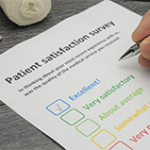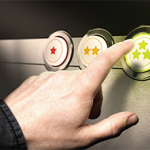Dr. Perkins also explains that patients should not feel guilty if the drug they need is expensive. “They learn that their physician will pick the best medication for them,” she says.
2. Dedicate staff members to handle the issue. Although Dr. Greer is frustrated by the growing cost of medications and the complex maze of drug coverage, having dedicated medical assistants tasked to do prior authorizations has helped, he says. These medical assistants, along with business office staff at his private practice (with eight physicians and three locations), will navigate formularies and advise patients. They also can see if a patient needs a drug sample to sustain them until the medication they need is available.
3. Find out where to get lower-cost drugs. A website like GoodRx.com can help patients compare costs for medications and find where prices are lower, Dr. Worthing says.
Another option to consider for cost comparison is a mail-order pharmacy or medication service, says Judy Vobroucek, owner, Discount Med Direct, with locations in Florida, Illinois and Pennsylvania. The company is a medication service that requires a prescription and works with a network of pharmacies in the U.S. and around the globe. For thousands of medications—excluding biologics—the company usually finds prices that are 30–80% less expensive than retail. Examples of their typical prices within rheumatology include 90 pills of Plaquenil for $124.71 vs. $196 at a larger retail chain pharmacy. Another example is $322.70 for 3.2 mL syringes of Orthovisc vs. $1,366 at a larger retail pharmacy.
Discount Med Direct does not work with insurance, but many of its medication prices are cheaper than what is covered with insurance, Ms. Vobroucek says.
4. Help patients find coupons, copay cards and patient assistance programs. Ironically, these programs sometimes make branded products cheaper than generics, Dr. Gibofsky says.
Helping a patient determine if they qualify for a patient assistance program can be helpful, says health insurance agent Larry Medcalf, Indianapolis, and owner of MedCardMember.com. A good rule of thumb is that a patient’s household income must be below 300% of the federal poverty line to qualify, he says, adding, “You can google a federal poverty line chart for the current year to determine if the patient meets the guidelines.” (For 2018, 300% would equal $49,380 for two people in a household and $75,300 for four people.)
If they do qualify, they can fill out an application on the drug’s website, or they can use a database of applications available on NeedyMeds.org. “They will need to provide proof of income and a prescription. Once approved, the medications are usually mailed out quarterly to either the patient or their doctor’s office,” Mr. Medcalf says.



